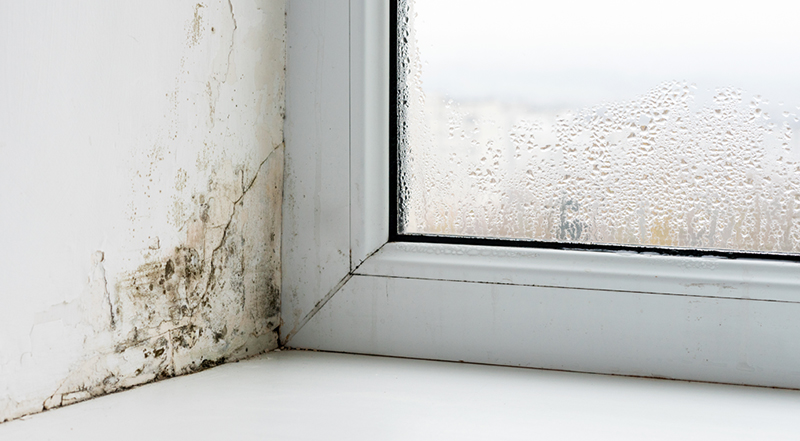Damp and mould and decarbonising homes
What is mould, and where does it come from?
When moisture laden air comes into contact with a cold surface, condensation occurs. When there is condensation on a cold surface for an extended period, it results in mould. In most cases, this happens in kitchens or bathrooms and on external walls in other parts of a home if there are little or no insulation, i.e. cold surfaces.
Mould can also be caused by excessive moisture due to leaking pipes, defective/metal window frames, roof leaks, damp basements, and much more. If continued condensation occurs, it results in black mould.
What effect does it have on us?
People with prolonged exposure to dampness or mould can suffer from serious health problems. In recent years, a vast amount of evidence has suggested this. A report from last month in the Guardian stated that Max from an east London housing block has been 'diagnosed with an incurable lung disease that his doctors warn is likely to be caused or exacerbated by the chronic mould and damp in his flat.' We have also heard of many other cases which have caused death. One of the most recent highly covered stories was the case of Awaab Ishak in 2020, the two-year-old who died due to black mould in his council flat in Rochdale.
Not only can dampness and mould result in health issues, but homes can also deteriorate and become unliveable. As energy bills increase, councils need to combat damp and mould issues to prevent further illnesses, deaths and rising energy costs.
Governments legislation – Awaab's Law
After Awaabs Ishak's death due to dampness and mould in 2020, many were in utter shock. The government understood how severe the matter was and introduced Awaab's Law. The government website mentions, 'Awaab's Law will force social landlords to fix damp and mould within strict time limits, in a new amendment to the Social Housing Regulation Bill.' Click here to learn more about this law.
How to resolve dampness and mould?
Resolving damp and mould issues long term requires specialist help. One way of doing this is to decarbonise homes. You can take steps to prevent this, such as better insulation, heat pumps, increasing ventilation, and ensuring windows are correctly fitted.
At LHC, we have frameworks that can help you decarbonise homes, such as the Energy Efficiency Consultancy (N8C), Energy Efficiency Measures & Associated Works (N8) and the Whole House Refurbishment and Associated Works (WH2) frameworks.
Also coming soon is our Asset Safety and Compliance (ASC1) framework.
To learn more about these frameworks and how they can support you in providing better buildings and homes for people to live in, contact Naureen Ullah, our Senior Client Support Manager for the South East, at naureen.ullah@lhcprocure.org.uk and Paige Kent, our Client Support Manager for London, at paige.kent@lhcprocure.org.uk.


